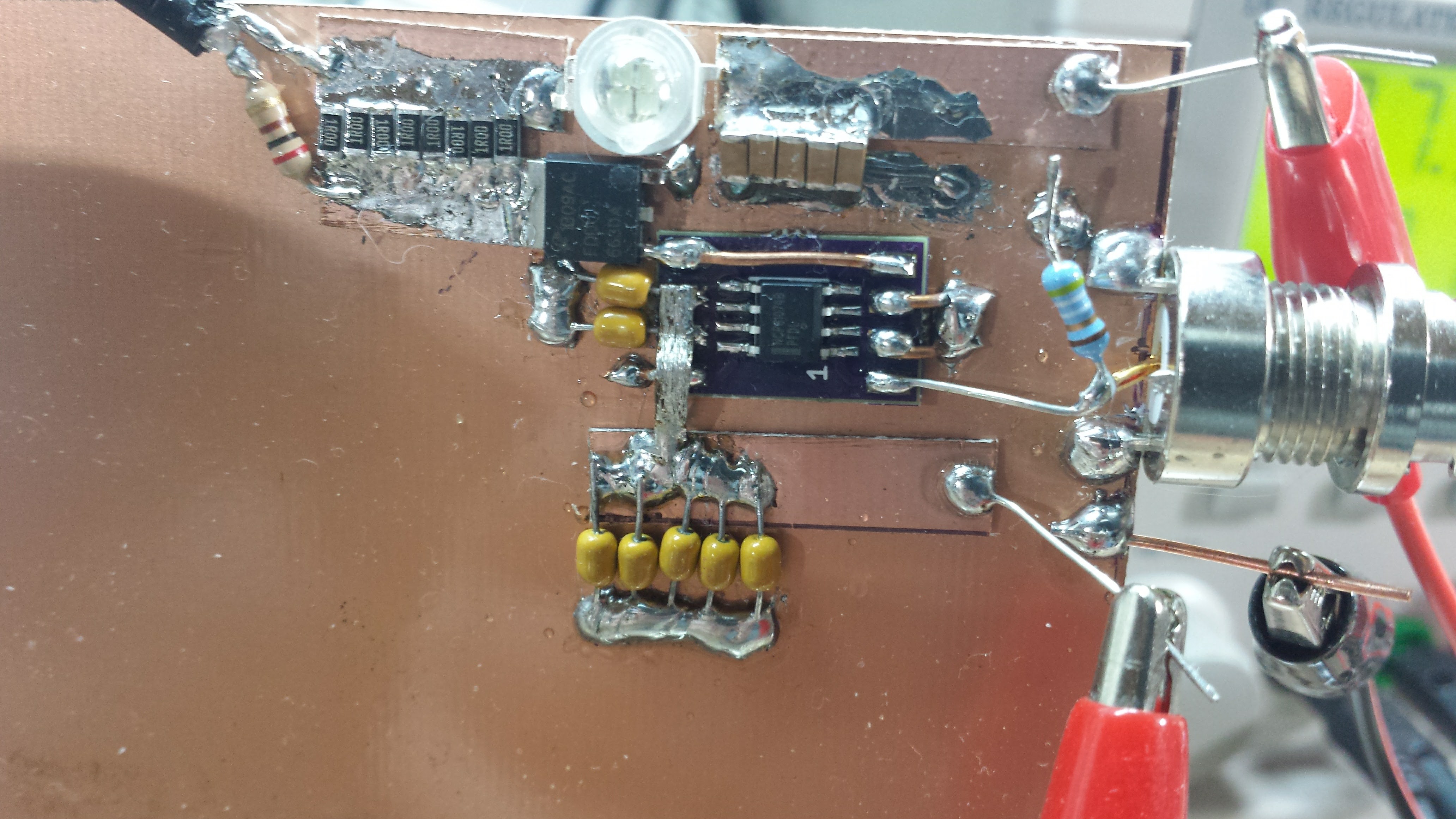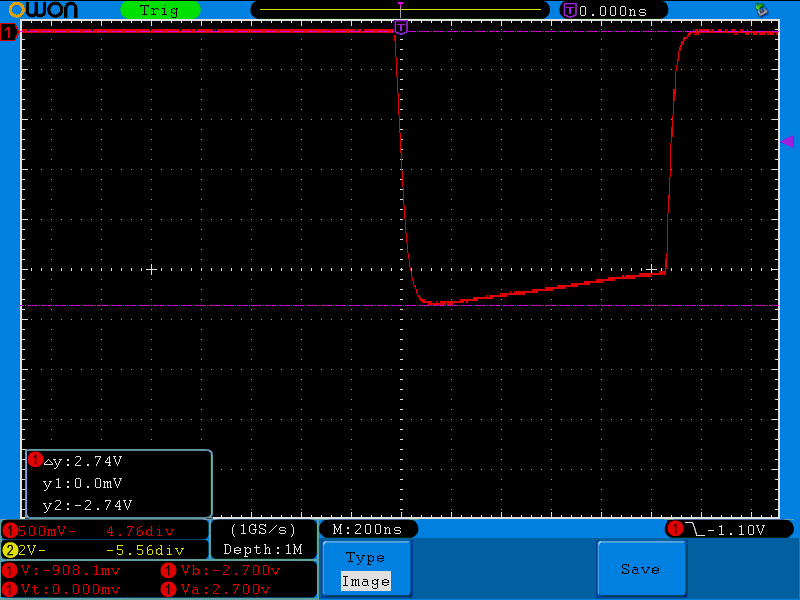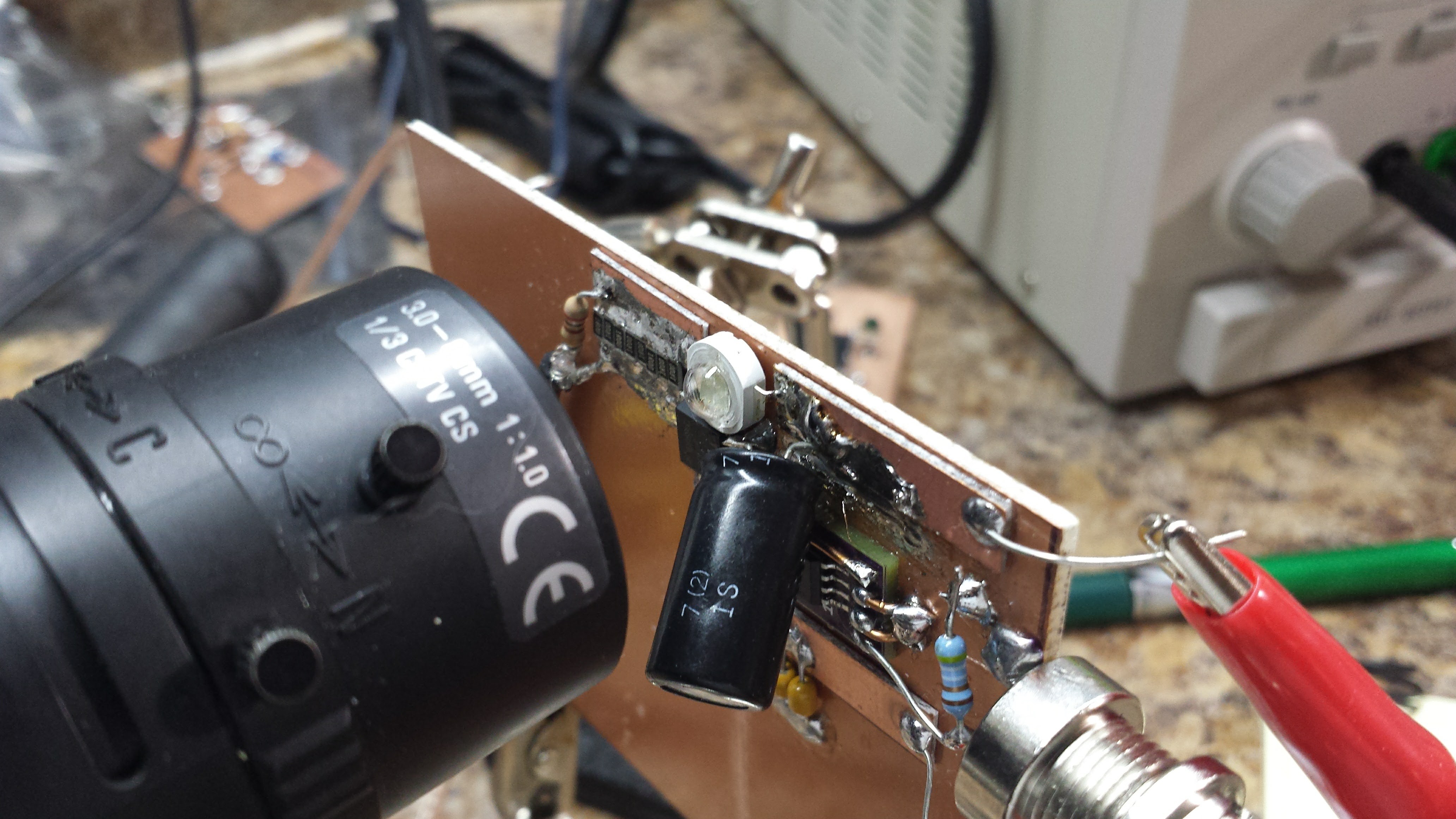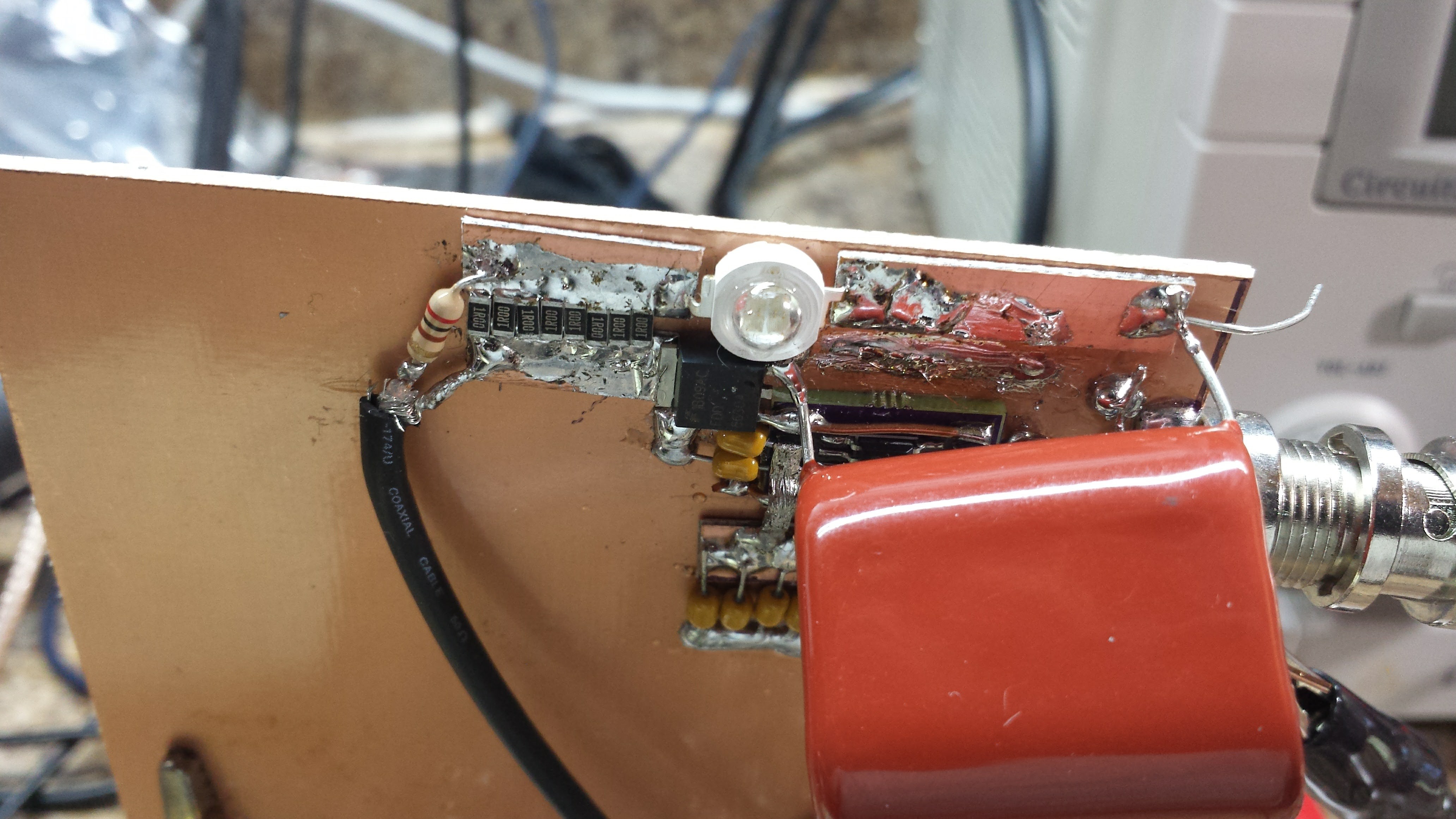Even though the test board can only go to 30V (due to the FDD6630A MOSFET), I decided to try the three different capacitors to see how they performed.
MLCC
This was the baseline test I discussed before. I used (5) 10uF 25V MLCCs in a 1206 package, soldered in parallel on the board (upper middle/right):

I had the probe leads soldered on backwards, so the current pulse looks negative. The capacitors are rated at 25V, so I only tested at 24 max. At this voltage, the peak current as measured across the 125 milliohm resistor is 21.9 amps. You can also see how the pulse slopes due to the capacitor voltage drooping as it discharges.

Photoflash Capacitor
This test was with a 40 uF 320V "photoflash" capacitor I bought on Ebay. I don't have any specs for this cap, other than the nominal capacitance and working voltage. I'm pretty jaded about this kind of purchase at this point, but I figured I'd give it a shot. The capacitor measured 53 uF on one of my DMMs. Here it is, soldered on the board. While the iron was hot, I also corrected the probe leads to make the pulse look positive on the scope.

Here's the current waveform with a 24V supply. The peak current is 15.2 amps - less than the MLCC because of the higher ESR of the electrolytic cap. You can also see a little bit of an overshoot/ring at the leading edge, which I think may be due to ESL in the capacitor, although the rise time isn't substantially slower. Maybe there's just enough ESL to inductively "peak" the rise time? One nice thing about this capacitor is that it has enough storage so that the voltage doesn't droop during the pulse. This is despite the fact that nominally, this part has less capacitance (40 uF) than the 5 paralleled 10uF MLCCs. At the applied voltage, the MLCC capacitance drops while this one stays relatively constant. Another plus is that this capacitor is by far the cheapest of the three I tested - I got 100 of them on Ebay for $14!

You can compensate for the additional series resistance in this capacitor by turning up the voltage. Here's what the pulse looks like at a 30V supply:

The current is now around 20.2 amps. I'm limited to 30V because of the MOSFET on this board - and that's ignoring any derating on Vdss. Since this capacitor is rated for 320V (if the heat-shrink sleeve is to be believed), there should be no problem getting much more current from it.
Overall, I was pleasantly surprised by this capacitor, especially considering the price. I thought the ESR and especially the ESL would be much worse.
Metalized Polyester Capacitor
This film cap is huge on the board. I could have made the leads a little shorter, but not much:

I think the size of this capacitor and the lead length result in some series inductance that slow the pulse down. I forgot to take a screenshot at 24V, but did get one at 30V:

The leading edge is a bit slower and more rounded than I would have expected, and you can see the voltage droop during the pulse. This capacitor is only 10uF, so that's not surprising - although it still has less droop than the "50 uF" of MLCCs. Where this capacitor really shines is in ESR. The peak current (at 30V supply) is 29.4 amps, as opposed to 20.2 for the photoflash cap. This is the cap you want if the system voltage is constrained by other factors. Even so, with the voltage rating of 250V, you could get a ridiculous amount of current from these caps - but, as discussed before their dv/dt rating would limit them to 150 A.
Conclusions
There isn't a perfect capacitor for a circuit like this; each one has it's pros and cons. I've summarized my qualitative thoughts on these three:
| Capacitor | ESR | ESL | Cap. loss w/ Voltage | Size | Cost |
| MLCC | excellent | excellent | bad | tiny | high |
| Film | excellent | OK | excellent | HUGE |
high |
| Photoflash | good | good/excellent | excellent | medium |
low |
I think I'm going to try going with the photoflash cap for now. @K.C. Lee suggested "generic" high-voltage electrolytics instead of photoflash caps (the idea being that the available documentation is much better and that they're used successfully in other pulse applications). I'll look around my parts bins for some to try. About the only thing I'd like to see improved over the photoflash cap I've tested would be a smaller ESR. I can compensate with a higher voltage, but this means a higher voltage MOSFET and regulator, too. You can get 50% more current at the same voltage with the film cap, but at at 10x the cost and in a much bigger size.
I also like the added capacitance from the electrolytic and the resulting flat-topped pulse with little droop. It's a double-edged sword, though. If the trigger circuit fails (it's software!), and creates a very long pulse, all the capacitor energy gets dumped into the LED. With smaller capacitors, I'd have less concern for the LED. Larger capacitors could store enough energy to permanently damage the LED chips. I'll just have to be careful.
I can also see that I'll need to add bleeder resistors and similar safety features into the flash circuits, since the voltages will probably get above the "safe to handle" range.
 Ted Yapo
Ted Yapo
Discussions
Become a Hackaday.io Member
Create an account to leave a comment. Already have an account? Log In.
Another nice and informative log :-)
Why not combine MLCC and electrolytic types ?
Are you sure? yes | no
I think I'll end up above the common working voltages for larger MLCCs (you can get the smaller ones in high voltage). They're also relatively expensive.
Beyond that, I'm always a little hesitant about paralleling different capacitors - you can generate unwanted resonances. I'll happily parallel many of the same cap, though.
See:
http://www.cypress.com/file/135716/download#page=3
"Use only one value of capacitor"
Are you sure? yes | no
It's a rule of thumb, if you can't test, but you do :-)
I have 330nF 50V caps, they can supplement electrolytic bulk capacitors :-)
Are you sure? yes | no
You're absolutely right, I could slap some caps on the board and have measurements in a few minutes. Next time I'm at the bench, I'll give it a shot.
I also have some larger-value photoflash caps. They should have a lower ESR.
Are you sure? yes | no
But a significant ESL, which can be compensated by some MLCC...
Are you sure? yes | no